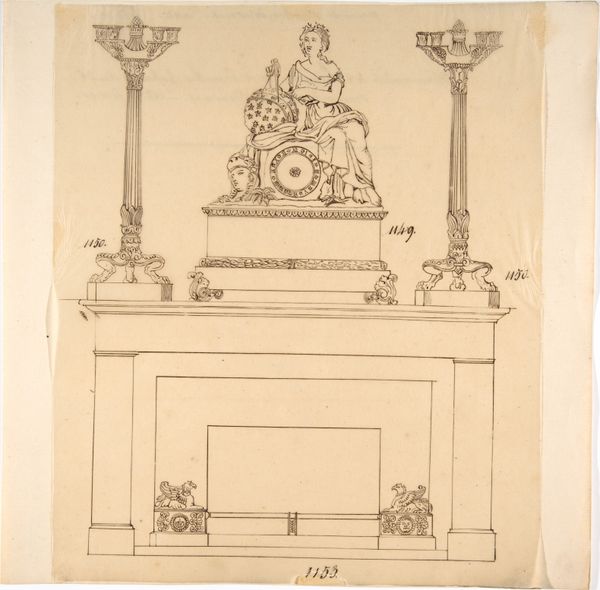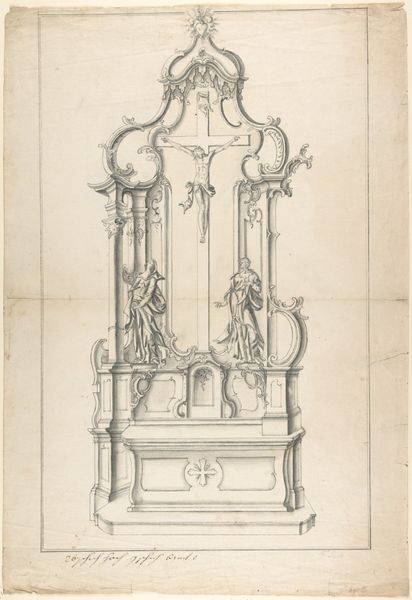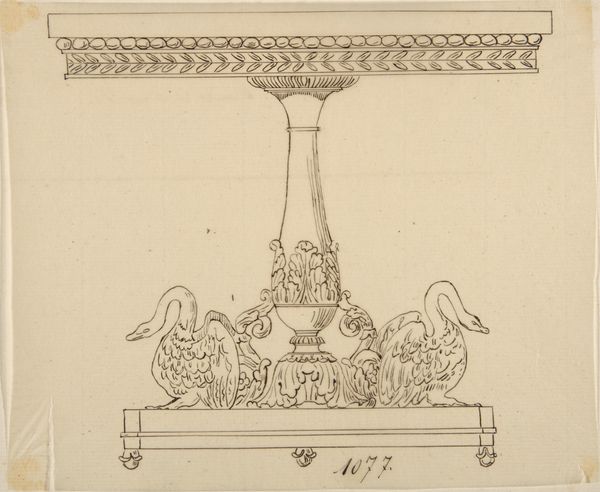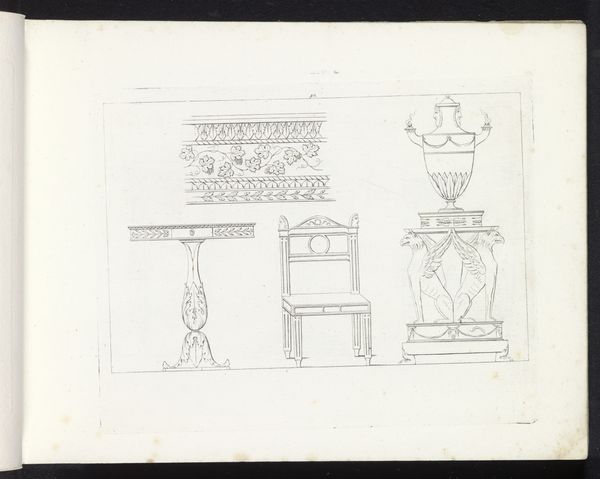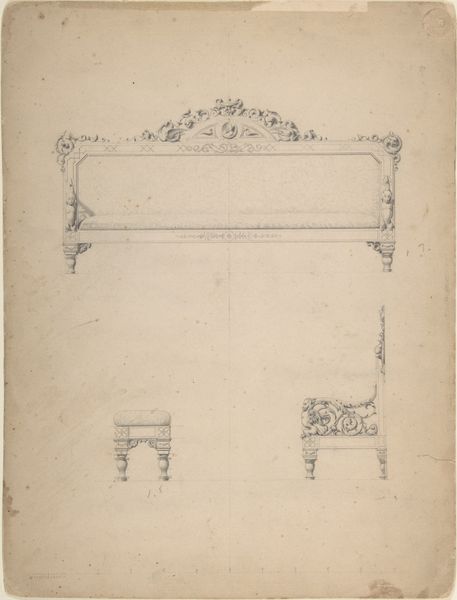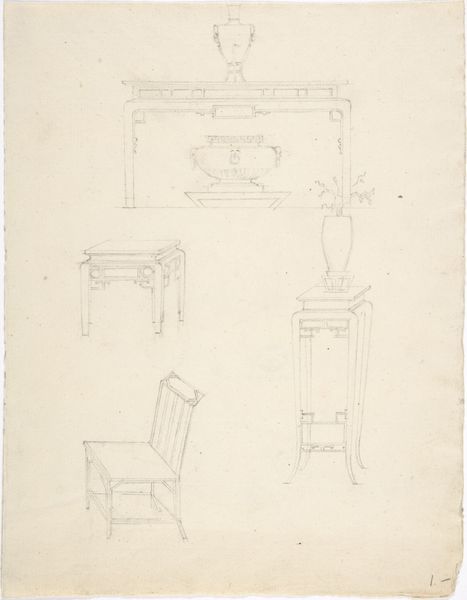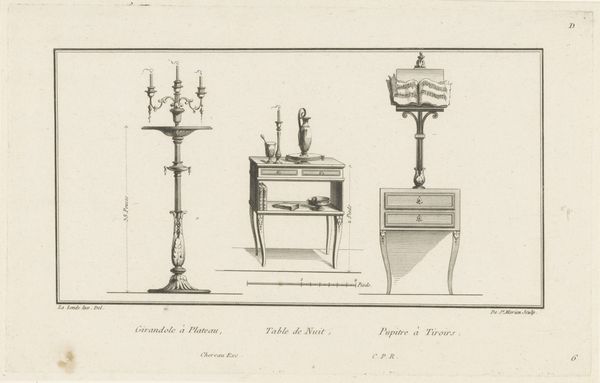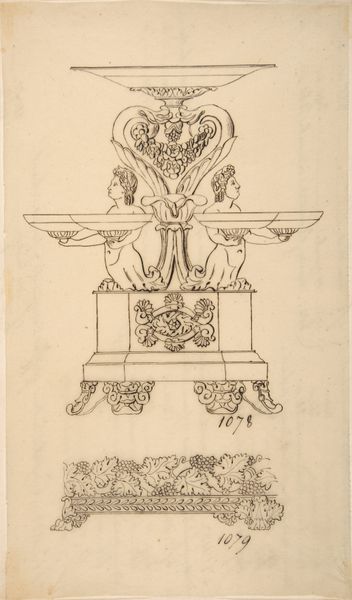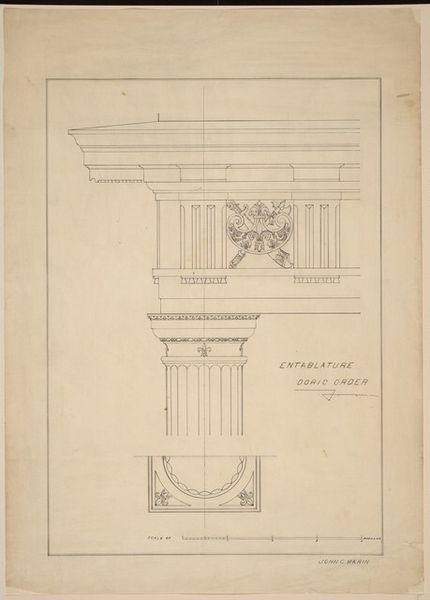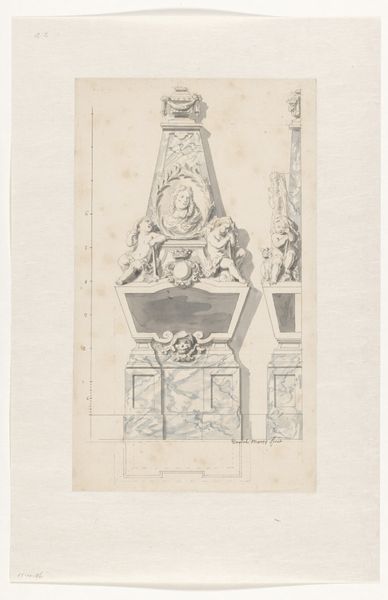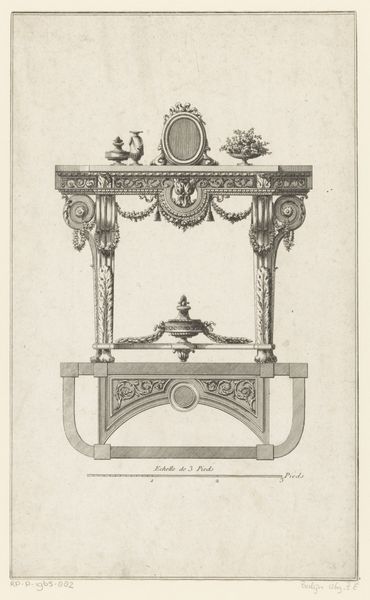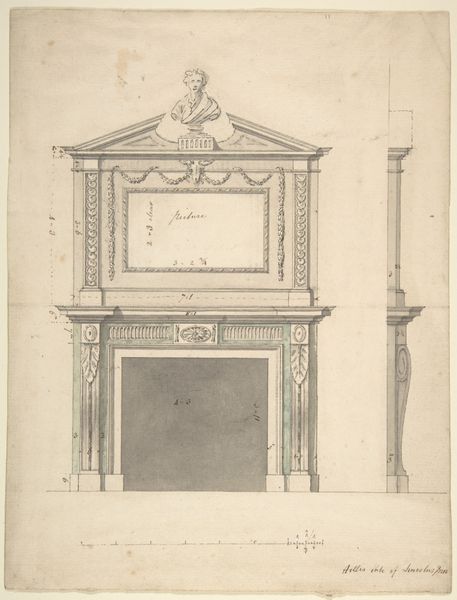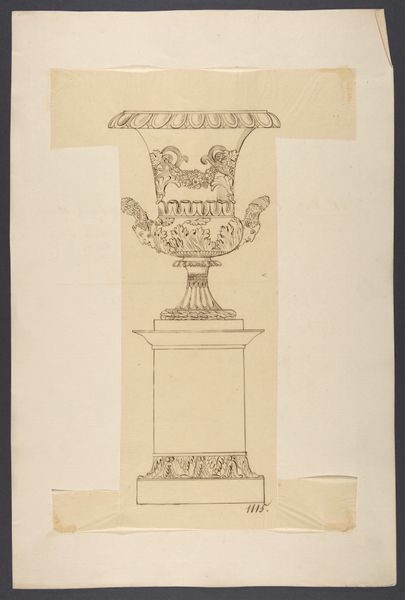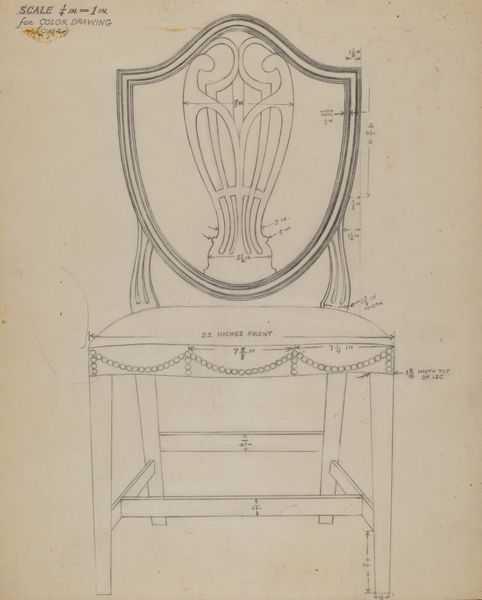
Design for a Fireplace Iron, Mantle Candlesticks and a Clock 19th century
0:00
0:00
drawing, print, etching
#
drawing
# print
#
pen sketch
#
etching
#
etching
#
history-painting
#
nude
Dimensions: sheet: 10 1/16 x 9 1/16 in. (25.6 x 23 cm)
Copyright: Public Domain
Curator: What an evocative design. This is a 19th-century rendering—an etching actually—called "Design for a Fireplace Iron, Mantle Candlesticks and a Clock," created by an anonymous artist. It is currently held at The Met. Editor: It has an ethereal, almost dreamlike quality. The fine lines give it a lightness, despite depicting fairly weighty objects—candlesticks, a fireplace, and a clock. What strikes me, beyond its spare aesthetic, is the classical imagery—a nude figure beside the clock is a particularly bold choice for domestic decoration. Curator: Indeed, the figure definitely recalls antiquity, suggesting a resurgence of classical ideals in domestic life. I read her pose, her contemplative stance, as personifying time itself—or perhaps our relationship to it. The placement of the candlesticks, flanking the clock, speaks to the symbolic balance between illumination, marking time and warmth in a household. These motifs would have resonated deeply within certain social circles at the time. Editor: So, the imagery connects to specific historical ideals? Do you think that incorporating nudes and historical imagery was a way for people to assert status or perhaps align themselves with particular philosophical leanings? Curator: Absolutely. The aesthetic choices here suggest wealth, learning, and a desire to create an environment that was both aesthetically pleasing and intellectually stimulating. Moreover, such iconography acted as a visual shorthand, connecting the owner of the home to broader narratives of history, mythology, and philosophical thought—all playing out within the home. Editor: I suppose the hearth, which represents domesticity and warmth, becomes a site where the family and social ties blend in a historical lineage of taste, culture, and philosophical sensibility. Do you feel that such deliberate choices were intended to signal moral superiority as well? Curator: The visual culture and decoration of one's home often acted as silent signifiers. Certainly, projecting virtue and moral authority was very much intertwined with taste and classical knowledge at the time. In an era when appearances were paramount, these choices certainly were strategic. Editor: This has offered some compelling insights on the function of symbolic domestic ornamentation and what it revealed about the society that embraced it. Curator: And about how seemingly innocuous designs once had the potential to signal and consolidate social identity.
Comments
No comments
Be the first to comment and join the conversation on the ultimate creative platform.
